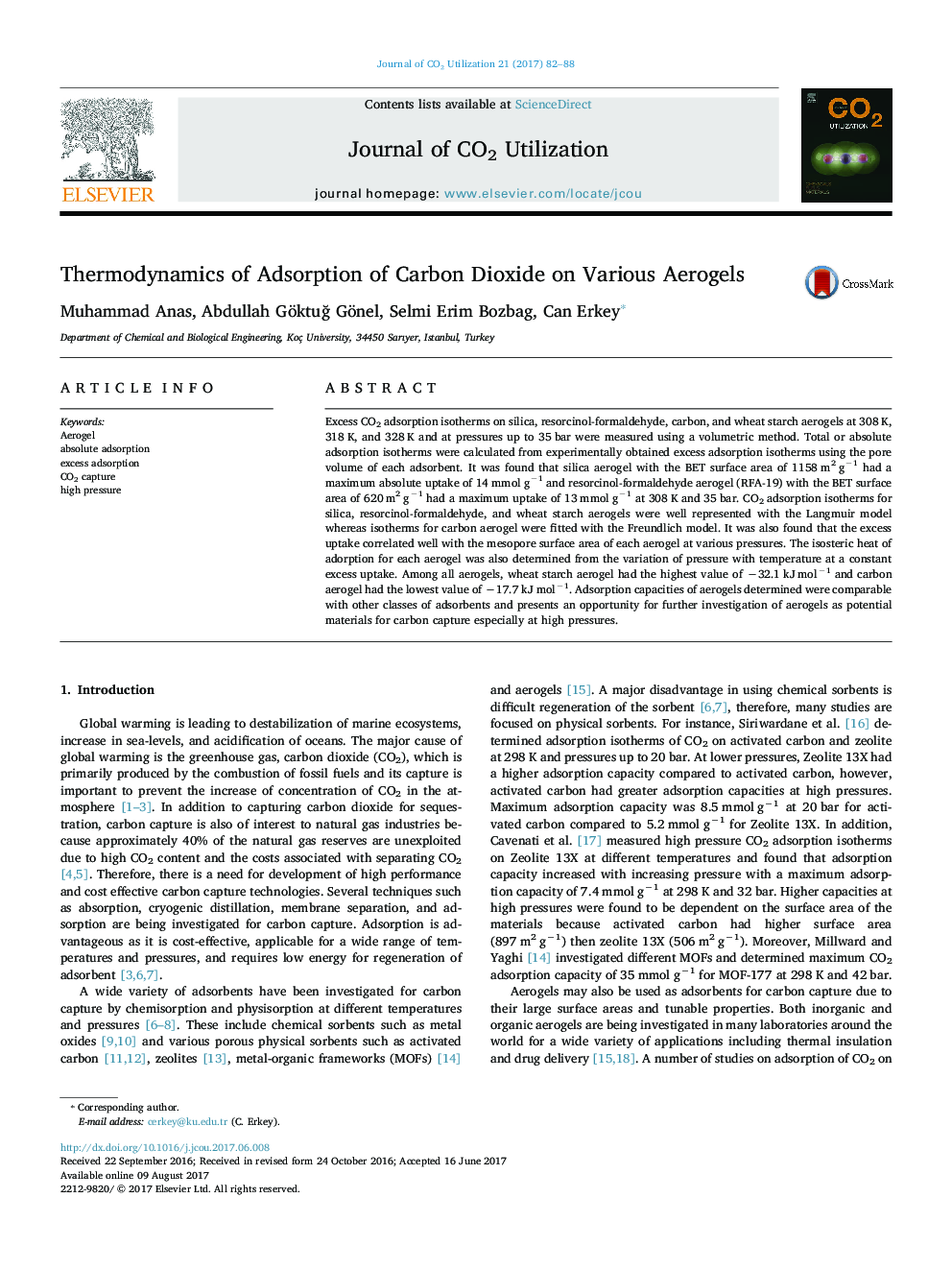| Article ID | Journal | Published Year | Pages | File Type |
|---|---|---|---|---|
| 6456023 | Journal of CO2 Utilization | 2017 | 7 Pages |
â¢Adsorption isotherms of CO2 on various aerogels were measured up to around 35 bar for the first time.â¢Silica and organic aerogels had very high excess uptakes.â¢Capacities of various aerogels varied linearly with the mesopore surface area of the aerogels.â¢Wheat starch aerogel had the highest heat of adsorption among all the aerogels.â¢The differences between absolute and excess uptakes for aerogels were higher than conventional adsorbents.
Excess CO2 adsorption isotherms on silica, resorcinol-formaldehyde, carbon, and wheat starch aerogels at 308 K, 318 K, and 328 K and at pressures up to 35 bar were measured using a volumetric method. Total or absolute adsorption isotherms were calculated from experimentally obtained excess adsorption isotherms using the pore volume of each adsorbent. It was found that silica aerogel with the BET surface area of 1158 m2 gâ1 had a maximum absolute uptake of 14 mmol gâ1 and resorcinol-formaldehyde aerogel (RFA-19) with the BET surface area of 620 m2 gâ1 had a maximum uptake of 13 mmol gâ1 at 308 K and 35 bar. CO2 adsorption isotherms for silica, resorcinol-formaldehyde, and wheat starch aerogels were well represented with the Langmuir model whereas isotherms for carbon aerogel were fitted with the Freundlich model. It was also found that the excess uptake correlated well with the mesopore surface area of each aerogel at various pressures. The isosteric heat of adorption for each aerogel was also determined from the variation of pressure with temperature at a constant excess uptake. Among all aerogels, wheat starch aerogel had the highest value of â32.1 kJ molâ1 and carbon aerogel had the lowest value of â17.7 kJ molâ1. Adsorption capacities of aerogels determined were comparable with other classes of adsorbents and presents an opportunity for further investigation of aerogels as potential materials for carbon capture especially at high pressures.
